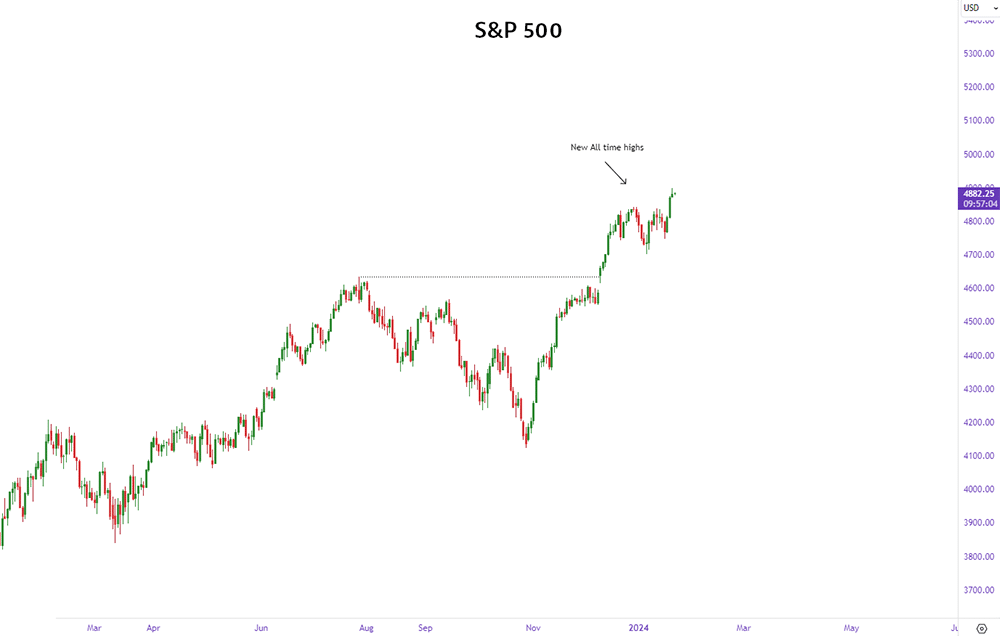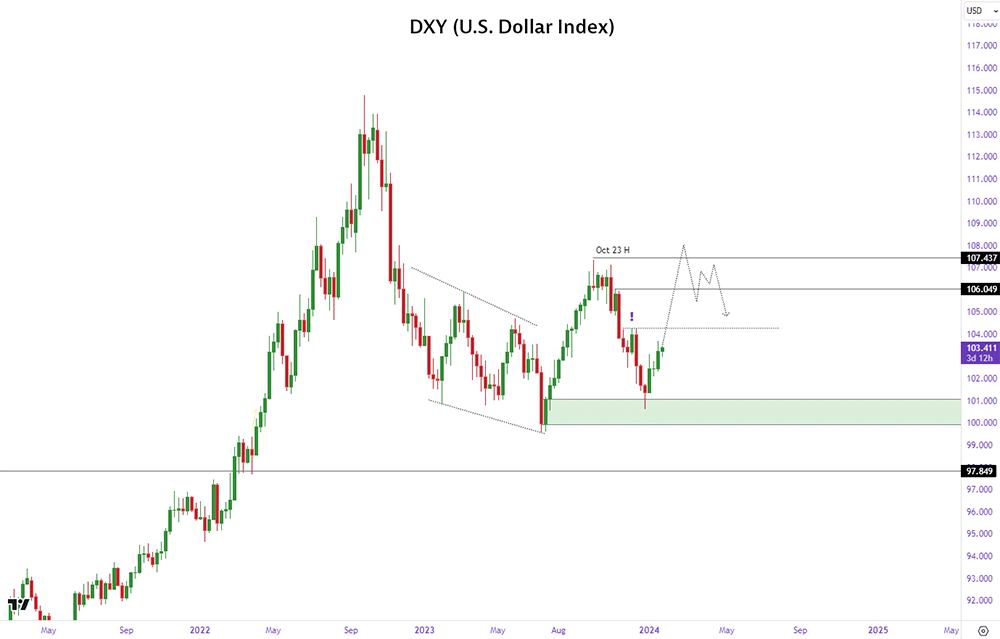January 2024 unfolded as a dynamic and volatile month for financial markets and commodity prices. The early weeks of January saw euphoria among investors fueled with hopes of receding inflation concerns and a dovish fed. However, a hawkish central bank and geopolitical tensions soon dampened that optimism. Meanwhile, falling oil prices and tightened investments drove bearish pressure on hopeful investors.
Overall, financial markets resumed their December 2023 rally, mainly due to cooling inflation data and an eased U.S. CPI print. Consequently, risk assets like the semiconductor sector thrived, driving indices like the S&P by more than 7% and the NASDAQ by over 10%. The dollar index also optimized the bullish price action, putting its current price above $103.

Interestingly enough, prices for gold and silver continue to trade down. Moreover, seeking pressure from the dollar index, certain precious metals remain driven by bearish patterns. Finally, other emerging markets and commodity prices – particularly steel – sought out healthy rallies thanks to eased supply chain constraints.
Don’t settle for stagnant savings. MetalMiner’s custom price forecasting unlocks the true potential for you to maximize profit. View our full metal catalog.
Steel, Oil, and the Dollar Index
In early January, the U.S. steel market saw continued momentum from December 2023. Overall, prices rallied with bullish strength as Q4 came to a close, and most analysts expect the trend to continue. However, with recent price softening, participants may anticipate potential price adjustments in the coming months.

Though the U.S. dollar index strengthened and surged above $103, emerging currency markets previously trading in an uptrend are now under bearish pressure. This is mainly due to risk aversion and geopolitical uncertainties. Still, this price action will put heavy pressure on oil markets, and could eventually lead to demand destruction. Furthermore, oil prices have retreated and have yet to break from their December highs. On top of this additional uncertainty, current oil markets have yet to recover from the long-term downtrend that began in September 2023 (stay posted on these macroeconomic trends and other market trends impacting metal prices with MetalMiner’s weekly newsletter).
Brent crude prices started near $87 a barrel but closed near $80. Meanwhile, U.S. benchmark, WTI followed a similar bearish trend, starting at $84 and closing lower at $77. Overall, short-term oil volatility remained high this month, which will continue to show further potential GDP growth for Q1. On the flip side, a falling oil market may also continue to fuel inflation, causing a potentially dovish Fed to switch to a more hawkish approach.
Commodity Prices in Relation to the Stock Market
Emerging sectors of the stock market have sought consistent week-over-week gains this month. As previously mentioned, semiconductor chips and A.I. investor volume continues to pour in and push prices up. But while stocks, emerging markets, and certain commodities increased this month, precious metals such as gold and silver sought out bearish price action due to the rising dollar.

A rising stock market and dollar index continue to demonstrate an inherent volatility risk across financial markets, which could impact commodity prices. As a result, investors navigating this complex market environment may experience optimistic disinflation and geopolitical headwinds, both of which may cause uncertainty. Moreover, prices for stock market indices and precious metals continue to send out mixed signals due to global market swings. Both a rising stock market and U.S. dollar index will continue to put pressure on emerging markets and certain commodities as inflationary risks and geopolitical headwinds unravel.




